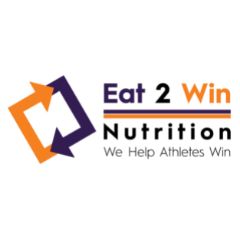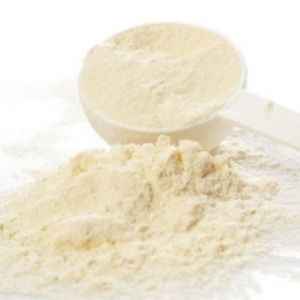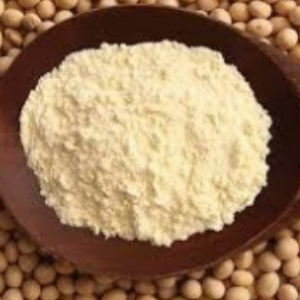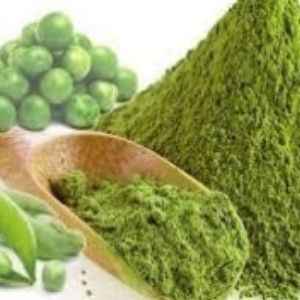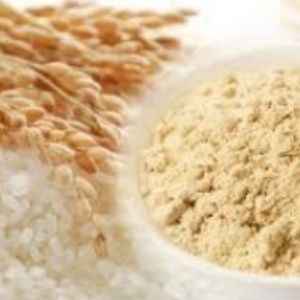A Beginners Guide to Protein Powder
Who hasn’t been here: You walk into a supplement store searching for a protein powder that will help you build muscle and speed recovery. The guy behind the counter looks like he is auditioning for the next superhero movie. (His suggestion could be a little too intense—just like him—unless you want to look like Jason Momoa and who wouldn’t?!) Your backup plan is to grab the first container of protein powder that you see then run if things become too overwhelming.
With so many protein options on the market today, it is hard to determine which one is best for you. Taking a quick glance around the store, you see whey, soy, pea and rice powders. Who knew rice is considered a protein? What is the difference between concentrate, isolate and hydrolysate?
By the end of this blog, you will know the answer to both of these questions!! The short answer: All these protein powders have the ability to help your body build muscle and enable you to reach your goals. The long answer? Read on.
Whey protein is probably the most common form of protein available on the market today. Whey is derived from milk and separated out when making cheese (blah, long process…) and eventually turned into the powder form you see at the store. Whey protein is typically made from cow’s milk and can be turned into a concentrate (the most common whey available today) or further filtered into an isolate or hydrolysate. Whey protein is great for recovery as it is the fastest protein to be broken down and absorbed by the body (yes, faster than its milk companion, casein) (1).
Whey concentrate has the highest amount of fat, cholesterol and lactose when compared with isolates and hydrolysates. Concentrate powders are good for athletes who don’t have to worry about lactose intolerance, it’s the least expensive of the three, and it is great for building muscle tissue (2). One common issue with whey protein powder is that it can cause bloating, gas and overall gastrointestinal upset. This is most likely due to an unknown lactose intolerance, so try an isolate or hydrolysate to see if these issues disappear. Dairy allergies in adults are rare, but if you suffer from them, soy, pea or rice would be the choice for you (3). Whey protein concentrate is ideal for those athletes with no digestive issues and looking to add overall muscle bulk with quick absorption to optimize recovery.
Whey isolate is one of the leanest proteins on the market due to the additional processing that removes fat and lactose. Isolate’s additional purification also removes some micronutrients (lactoferrins [anti-inflammatory], beta-lactoglobulins [decreases blood pressure] and immunoglobulins [enhances immunity]), which can impact overall health if they are not ingested somewhere else in the diet (4). Whey isolate is a great choice for those athletes who struggle with lactose intolerance or who are looking to build muscle while maintaining a leaner overall build, for example cyclists.
Hydrolysates are the most filtered of whey proteins through a process called hydrolysis (the removing/unbinding of water), which results in easier absorption, greater nutrient delivery and muscle growth in the body. It is the least allergenic of the whey proteins due to the additional purification and the further breakdown of amino acid bonds (often called pre-digestion). It is also the costliest to produce, and thus to purchase (2). Whey hydrolysate is ideal for athletes when an isolate still provides a few GI issues and who prioritize gains and recovery over cost.
Soy protein is made from soybeans through a couple of complicated processes and then dried into a powder form (5). A recent study shows soy protein shows similar results to whey protein for muscle development, however, research still shows that whey protein has an advantage when it comes to muscle development, most likely due to the leucine content (6,7,8). Leucine is the most active of the branch chain amino acids in muscle building thanks to its ability to stimulate protein synthesis. This is a process in our DNA that results, eventually, in building muscle in a long process that results in cell, and therefore, muscle growth (8).
The quality of soy protein is superior to other plant proteins in that it is most similar to that of animal proteins. Soy protein is good for those who are trying to watch their cholesterol levels and can help reduce risk of cardiovascular disease (9). It is also the best choice for vegetarians and vegans for muscle building and recovery options. It is worth noting that there have been many studies done on whether soy decreases testosterone levels in men. The results so far, have shown soy does not decrease testosterone levels (10,11,12).
Pea protein powder is made from extracting protein from yellow peas. It is limited in methionine and is not as easily digested as whey or even soy (13). Pea protein is high in iron; however, iron in plant proteins is not as easily absorbed as iron from animal sources. This can be easily remedied by adding in oranges or strawberries to your smoothies as Vitamin C aids in iron absorption (14).
Pea protein is great for the athlete who has many food allergies as it is naturally vegan, gluten free, dairy free, and does not contain any of the major allergens (peanuts, tree nuts, eggs, fish, shellfish, wheat, soy, milk). Pea protein also doesn’t have the same gritty texture or chalky taste as other plant-based powders, which is another plus for those who dislike protein powders for that reason.
Rice protein is made by grinding up the rice and treating it with an enzyme that separates the carbohydrate from the protein. It is allergen and gluten free, which makes it another great alternative for those with food allergies! It absorbs slower than whey protein and is considered inferior for muscle building as it has lower levels of lysine and thus not technically considered a complete protein (15). For this reason, chia or quinoa protein is often added to help increase its amino acid profile (13).
Rice protein doesn’t usually result in bloating, cramping or other gastric discomfort that can be experienced with whey (16). It is lower in carbohydrates and fat than whey, which is a benefit for athletes who are looking to build lean muscle who do not always want overall bulk.
Current research shows all these proteins, in their own ways, are beneficial in muscle building and recovery. If you have any dietary restrictions or are looking for an alternative to whey, there are some great protein powders for every concern.
Supplementing with protein powders can help reach caloric and training goals, just know that supplements aren’t regulated by the FDA. This means that not all ingredients have to be listed on the nutrition label, so look for powders that have been NSF-certified for sport as these powders are sure to keep you in the game and reaching your goals. You can now confidently walk into a supplement store knowing which protein powder will help you achieve your goals.
Resources
- Increasing Protein for Athletes
- Dietary Supplement University
- Informed Choice Certified: Trusted by Sport
- Supplements: Do I Really Need Them?
- Drug Supplement Testing in Sports
- Optimizing Protein Intake for Athletes
- High Protein Diet in Athletes
- Sports Nutrition for Power Athletes
- Dietary Supplements and Athletic Performance
- Supplement Industry and Supplement Safety
References
- Kårlund, A., Gómez-Gallego, C., Turpeinen, A. M., Palo-Oja, O. M., El-Nezami, H., & Kolehmainen, M. (2019). Protein Supplements and Their Relation with Nutrition, Microbiota Composition and Health: Is More Protein Always Better for Sportspeople?. Nutrients, 11(4), 829. https://doi.org/10.3390/nu11040829
- West, D., Abou Sawan, S., Mazzulla, M., Williamson, E., & Moore, D. R. (2017). Whey Protein Supplementation Enhances Whole Body Protein Metabolism and Performance Recovery after Resistance Exercise: A Double-Blind Crossover Study. Nutrients, 9(7), 735. https://doi.org/10.3390/nu9070735
- Lam, H. Y., van Hoffen, E., Michelsen, A., Guikers, K., van der Tas, C. H., Bruijnzeel-Koomen, C. A., & Knulst, A. C. (2008). Cow's milk allergy in adults is rare but severe: both casein and whey proteins are involved. Clinical and experimental allergy : journal of the British Society for Allergy and Clinical Immunology, 38(6), 995–1002. https://doi.org/10.1111/j.1365-2222.2008.02968.x
- Patel S. (2015). Emerging trends in nutraceutical applications of whey protein and its derivatives. Journal of food science and technology, 52(11), 6847–6858. https://doi.org/10.1007/s13197-015-1894-0
- Kalman D. S. (2014). Amino Acid Composition of an Organic Brown Rice Protein Concentrate and Isolate Compared to Soy and Whey Concentrates and Isolates. Foods (Basel, Switzerland), 3(3), 394–402. https://doi.org/10.3390/foods3030394
- Khairallah RJ, O’Shea KM, Ward CW, Butteiger DN, Mukherjea R, et al. (2017) Chronic dietary supplementation with soy protein improves muscle function in rats. PLOS ONE 12(12): e0189246. https://doi.org/10.1371/journal.pone.0189246
- Ramdath, D. D., Padhi, E. M., Sarfaraz, S., Renwick, S., & Duncan, A. M. (2017). Beyond the Cholesterol-Lowering Effect of Soy Protein: A Review of the Effects of Dietary Soy and Its Constituents on Risk Factors for Cardiovascular Disease. Nutrients, 9(4), 324. https://doi.org/10.3390/nu9040324
- Suryawan, A., Orellana, R. A., Fiorotto, M. L., & Davis, T. A. (2011). Triennial Growth Symposium: leucine acts as a nutrient signal to stimulate protein synthesis in neonatal pigs. Journal of animal science, 89(7), 2004–2016. https://doi.org/10.2527/jas.2010-3400
- Gupta A, Jadhav JB, Gunaware KD, Shinde B (2016) Whey Proteins and Its Impact on Human Health Nutrition: Review. J Anal Pharm Res 3(8): 00083. DOI: 10.15406/japlr.2016.03.00083
- Messina, M., Lynch, H., Dickinson, J. M., & Reed, K. E. (2018). No Difference Between the Effects of Supplementing With Soy Protein Versus Animal Protein on Gains in Muscle Mass and Strength in Response to Resistance Exercise. International journal of sport nutrition and exercise metabolism, 28(6), 674–685. https://doi.org/10.1123/ijsnem.2018-0071
- Messina M. (2010). Soybean isoflavone exposure does not have feminizing effects on men: a critical examination of the clinical evidence. Fertility and sterility, 93(7), 2095–2104. https://doi.org/10.1016/j.fertnstert.2010.03.002
- Hamilton-Reeves, J. M., Vazquez, G., Duval, S. J., Phipps, W. R., Kurzer, M. S., & Messina, M. J. (2010). Clinical studies show no effects of soy protein or isoflavones on reproductive hormones in men: results of a meta-analysis. Fertility and sterility, 94(3), 997–1007. https://doi.org/10.1016/j.fertnstert.2009.04.038
- Hoffman, J. R., & Falvo, M. J. (2004). Protein - Which is Best?. Journal of sports science & medicine, 3(3), 118–130.
- Hallberg, L., & Hulthén, L. (2000). Prediction of dietary iron absorption: an algorithm for calculating absorption and bioavailability of dietary iron. The American journal of clinical nutrition, 71(5), 1147–1160. https://doi.org/10.1093/ajcn/71.5.1147
- Joy, J.M., Lowery, R.P., Wilson, J.M. et al. The effects of 8 weeks of whey or rice protein supplementation on body composition and exercise performance. Nutr J 12, 86 (2013). https://doi.org/10.1186/1475-2891-12-86
- Schimmel, P. (2002). The protein synthesis world. https://doi.org/10.1016/S0968-0004(02)02203-X
Contributing Author: Lauren Cook, RD

